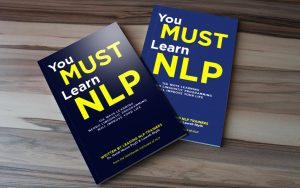It was through studying and eventually modelling a few specific therapists in the 1970’s that connected the unconscious mind and its ability to be programmed and reprogrammed to the development of NLP as we know it today. Specifically, Fritz Perls, a Gestalt therapist, Virginia Satir, a family therapist, and Dr. Milton Erickson, a hypnotherapist, all obtained exceptional results with their clients and used specific techniques that worked and communicated directly with the unconscious mind. As you are undoubtedly aware of the plasticity of our brains, these therapists knew, understood, and used this concept before the term neuroplasticity was even coined.
Fascinatingly, the development of NLP happened quite by happenstance. The three official founders of NLP are Richard Bandler, John Grinder, and Frank Pucelik, plus there was a group of a dozen other people who were involved in the modelling and development of various concepts. This is the short story of how NLP was started, which will give you an insight into the minds and focus of the developers as you continue through this book.
Richard Bandler and Frank Pucelik were students at the University of California in Santa Cruz; it was a rather alternative university at the time, more focused on well-rounded education than specific majors. These two young men had been studying Gestalt Therapy with Fritz Perls before his death in 1970. Richard transcribed audio recordings of Fritz Perls and one day overheard Richard impersonating Fritz Perls with great accuracy. Richard also met Virginia Satir at a family reconstruction event, and he helped to transcribe the recordings of this training too. Similar to Fritz Perls, Richard was able to imitate Virginia Satir in such a way that he took on her body and voice characteristics. You see, Richard was a born modeller.
As senior students, Richard and Frank had the opportunity to teach a course at the university, and so they chose to teach a course on Gestalt Therapy. The requisite was a need for supervision of a staff member. Gregory Bateson introduced them to John Grinder, an Associate Professor of Linguistics, who became fascinated with the linguistic dance Fritz Perls used with his clients through Gestalt Therapy. Together, they all began unpacking the verbal and non-verbal toolbox of Fritz Perls.
At some point, Gregory Bateson introduced them to Milton Erickson, to study and learn the hypnotic linguistic patterns he used with clients. In a book written by Richard Bandler and John Grinder in 1975 entitled Patterns of the Hypnotic Techniques of Milton H. Erickson, M.D. , Milton wrote “In reading this book, I learned a great deal about the things that I’ve done without knowing about them.”
From here, a group of about a dozen people began experimenting with aspects of all three modalities—Gestalt Therapy, family therapy, and hypnotherapy—creating tools, concepts, methodology, and processes that used the unconscious mind to identify what programming existed, how it was created, and how it could be changed. The first book about NLP, The Structure of Magic, was written in 1975 by Richard Bandler and John Grinder, and the development continued.
None of the core group were trained therapists, but they were curious enough to experiment with different concepts and learnings they gathered from Virginia, Frits, and Milton to create what we know today as NLP.
One of Richard Bandler’s definitions of NLP is, “It’s an attitude of curiosity and a methodology that leaves behind a trail of techniques.”
Throughout this book, we hope you open to your own curiosity as you learn more about the methodology of NLP and how you can use these various techniques in all aspects of your life.
For a more in-depth explanation and introduction to NLP, we invite you to our free online intro to NLP at: www.youmustlearnnlp.com/intro








